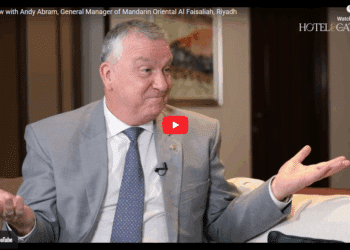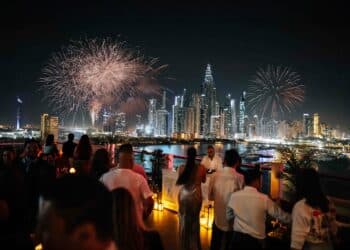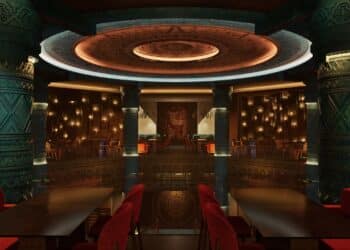Qatar is increasingly becoming a highly desirable location, says Al Rayaan Hotel Doha, Curio Collection by Hilton general manager Luca Crocco. As evidence he points to the fact that, thanks to recent expansions, Qatar Airways now flies to 120 destinations.

Meliá Hotels International, development director of Middle East and North Africa Benjamin Oppl said: “A prolonged scenario with low oil prices certainly had and still is having a negative impact on overall business activity in the region, including Qatar.
“Governments tend to respond by decreasing expenditure levels on public works and infrastructure. All of that can commonly translate into lower demand for accommodation units, more so in areas that are depending more on the corporate segment (such as Qatar) than leisure travellers.”
He pointed out, that while there has been a downturn in market wide performance, it’s no different than is happening elsewhere in the Middle East.
This is driven by reduced demand on the back of low oil prices, devaluation of currencies in addition to new supply entering the market (1,500 keys in 2016).
According to latest data provided by Qatar Tourism Authority, for the first three quarters of 2016, the number of visitors to the country (2.2 million) decreased by 3% when compared to the same period in the previous year.
It is expected that this negative trend will have continued for the remainder of last year and into 2017.
Weaker demand paired with increased supply ultimately translates into lower ADR’s and occupancy levels at hotels within the destination.
In the case of Qatar, marketwide Revpar levels are expected to have decreased in between 13%-22% (depending on micro location) in 2016 and when compared to the same period in the previous year. Looking ahead, this is certainly a trend that requires careful monitoring, in particular when considering new potential hotel projects.
Qatar’s tourism market will continue to present dynamic opportunities to hoteliers, Crocco says, as the country solidifies its position as a regional travel hub and a world-class business and leisure destination enhanced by a growing repertoire of impressive tourism infrastructure, leisure and sporting events, cultural attractions and a vibrant art scene.
“With Qatar Tourism Authority continuing to set out ambitious growth targets in line with the National Tourism Sector Strategy 2030, we are met with the challenge of broadening guest demographics to grow visitor numbers and income generated by the sector nationwide,” he says.
“With Hilton’s diverse portfolio of six trading and pipeline brands in Qatar, we are actively taking steps to diversify the destination’s hospitality proposition. The opening of AlRayyan Hotel Doha in December 2016 has allowed us to welcome a new set of travellers seeking a unique travel experience in Qatar.”
Oppl said Qatar’s hospitality market, in line with the wider GCC, will likely continue to face lower levels of demand on the back of overall weaker economic activity and reduced government spending.
“However, the overall fundamentals of the region’s hospitality industry remain strong and the countries with the most diversified economies and a wide range of demand segments for travel, leisure, business and MICE, such as the UAE, are well suited to face the current tough economic conditions and are able to swiftly adapt if one of the segments breaks down,” he says.
“Owners, developers and operators will continue to focus their efforts on cost optimisation and growing so far underserved segments. New projects will likely be re-evaluated to ensure feasibility under consideration of the current market dynamics.”
He pointed out that Qatar is currently witnessing a shift from a traditionally strong focus on the luxury segment towards more three and four star segments. Driven by the new supply coming online in these segments, market wide ADRs are naturally decreasing, a fact which is not necessarily driven by overall low economic activity.
“Qatar is looking to further develop its historical and cultural offering, with the likes of the soon-to-open Qatar National Museum and established Museum of Islamic Arts positioning Doha as a city to watch in the global arts and culture tourism scene,” he said.
Oppl says moves are afoot to transform Qatar into a business-driven destination to becoming a leisure capital of the Gulf, and the number of world class museums and the hosting of the FIFA World Cup are only some of the major initiatives.
“In parallel the country aims to reduce its dependency on the traditionally strong Saudi market, by growing other source regions in Asia and Europe,” he says.
“An immediately promising initiative is the removal of visa restrictions for travellers from India, China and Russia in early 2017. Some of these source markets have seen the biggest growth in recent years in the neighbouring UAE.
“In parallel, Qatar enforces its importance as a key shopping destination in the Gulf with the launch of the Qatar Shopping Festival over a four-week period from early January 2017.
“From a core attractions and leisure resources point of view, Qatar has and can offer everything that its successful neighbour UAE has managed to exploit over the past decade: sea, sun and sand, shopping, museums, watersports, desert, world class infrastructure, wide hospitality offering.”


































































